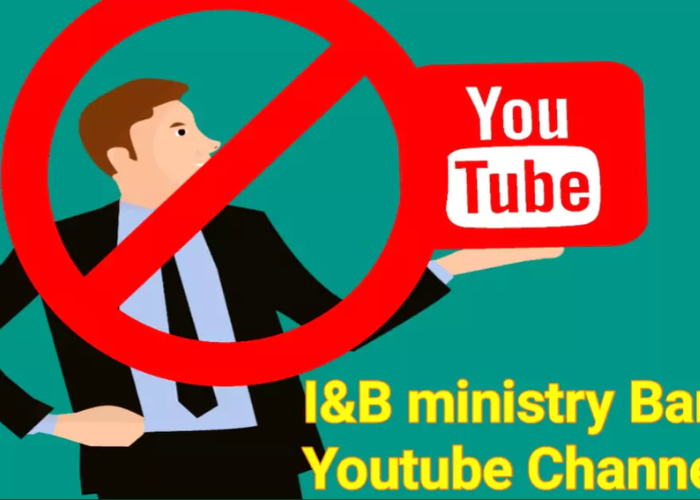
Rajkotupdates.news:A-Ban-On-Fake-Youtube-Channels-That-Mislead-Users-The-Ministry-Said
The Internet has been a source of information, entertainment, and education for decades. It can be a double-edged sword—while it provides unprecedented access to resources, it can also be used to spread misinformation and lies. This is particularly true for YouTube, where fake channels are designed to mislead viewers. The Ministry of Communications and Information Technology recently banned fake channels designed to misinform viewers.
What Is a Fake Youtube Channel?
A Fake Youtube Channel is an account on the popular video streaming platform intentionally created to mislead users. These channels are typically created by people trying to scam viewers out of their money or gain access to their personal information. Fake channels often use false advertising and deceptive content to entice viewers to click links that lead to malicious websites or buy products from suspicious sources. The Ministry’s ban on these channels aims to crack down on these scammers and protect users from falling victim to their schemes.
Fake Youtube Channels are typically created to monetize views and subscribers. These accounts use clickbait titles and thumbnails to draw viewers in and send them to websites with malicious content, such as malware, phishing scams, or fake surveys. They also use links to buy products from dubious sources, such as counterfeit merchandise or stolen items.
The Ministry’s ban on Fake Youtube Channels is meant to protect viewers from being misled by these scammers. It is also an effort to keep users safe from malware, phishing scams, and other malicious activities. The ban applies to existing and new channels, and those caught violating it may face legal action.
In addition to the ban, the Ministry encourages users to be vigilant regarding the content they are viewing. They should know the difference between legitimate and fraudulent channels and be cautious when clicking links or buying products from unknown sources.
What Misleading Practices Are Being Banned?
The Ministry of Communication and Information Technology has banned fake Youtube channels that mislead users. This is a move to protect consumer interests and ensure all platform users know what they are watching and who provides the content. This ban applies to all Youtube channels that are not genuine and use deceptive practices to mislead users.
The most common form of misleading practice is when a channel is presented as if it is providing a genuine service when the content is part of a scam or a malicious campaign to promote a product or service. Other forms of misleading practice include channels created to generate views or ad revenue or channels created to spread false information. All of these practices are prohibited under the new ban.
The Ministry also wants to ensure users can identify genuine channels from fake ones. To this end, the ban requires all channels to clearly state in their description who the channel is owned by and where the content is coming from. This will help prevent users from being duped into believing they are watching a genuine channel when the content is part of a scam or malicious campaign.
In addition to this, the ban also prohibits channels from using deceptive titles or descriptions to attract more viewers. This is to ensure that viewers are not deceived into believing they are watching content that is not genuine.
The Ministry hopes this new ban will protect consumer interests and ensure users can identify genuine channels from fake ones. This will help create a more secure and transparent environment for platform users.
What Are the Consequences of Posting False Content?
The consequences of posting false or misleading content on YouTube are serious and far-reaching. It creates confusion and frustration for users trying to find genuine, reliable information, and it can also lead to legal repercussions for those caught disseminating misinformation. In response to the proliferation of fake channels, the Ministry recently banned all accounts that post false or misleading content.
The primary consequence of posting false content is that users cannot trust the source of the information they are consuming. This is particularly concerning for those who rely on YouTube for educational or research purposes. If users cannot trust the content they are viewing to be accurate, they will be unable to make informed decisions or gain valuable knowledge from videos. Additionally, these false channels can decrease user confidence in the platform, as they will no longer feel safe knowing they are receiving reliable content.
Furthermore, the ban on fake channels and content can result in legal repercussions for those who post false or misleading information. Violators can be subjected to fines, imprisonment, or even the suspension of their accounts, depending on the severity of the false content. While this may seem like a harsh punishment, it is essential to ensure that YouTube remains a safe and trustworthy platform for users to access reliable information.
In conclusion, the Ministry’s ban on fake YouTube channels is an important step in preserving the integrity and accuracy of the platform. It protects users from being misled by false content and prevents those found guilty of posting false or misleading information from facing serious legal repercussions.
The Impact of the Ban on Users and Creators
The ban’s impact on users and creators of Youtube channels has been huge. Users now have the peace of mind that when they watch a video, it is from an authentic source. Fake channels have been known to post videos that can be misleading or dangerous to viewers. It can be difficult to tell which videos are legitimate and which are not, and the ban ensures that users will not be tricked into watching something unreal.
For creators, the ban provides a level playing field for authentic creators as they no longer have to compete with fake channels for views and subscribers. It also means that creators will not have to worry about their content being stolen and used by fake channels. This is a major benefit as it helps to protect the content of legitimate creators, as well as make sure that they get the credit they deserve.
Overall, the ban has benefited users and creators, providing a safer and more honest environment for everyone involved.
Conclusion
The Ministry’s ban on fake YouTube channels was a necessary step to protect both the users and the integrity of the YouTube platform. By eliminating fake channels and their misleading content, the Ministry has created an environment of trust and safety for users while ensuring that content creators are not taken advantage of by unscrupulous actors. The Ministry has also set a strong precedent for other countries to follow to protect the interests of their users and content creators. This ban should remind all content creators to be mindful of what they post and ensure that their content is not deliberately misleading or deceptive.




